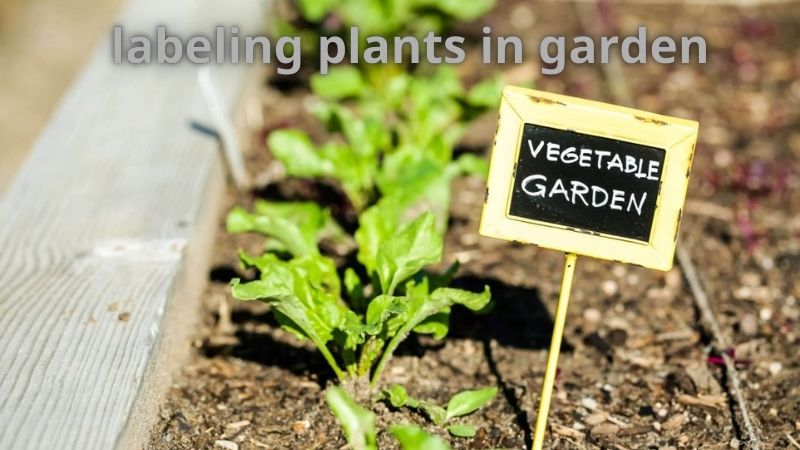Labeling plants in garden may be a small step but has huge benefits for any gardener. Plant labels not only help you identify and distinguish different types of plants but also create a neat, scientific, and easy-to-manage garden. In this article, Garden Creatives learn about the importance of tree labeling, common types of labels, how to do it effectively, and helpful tips to help you optimize the job.
1. The importance of labeling plants in garden
Labeling plants not only helps you easily identify each type of plant but also brings many benefits such as:
Effective management: With tree labels, you can easily manage and monitor the development of each type of tree, from planting to maturity. This is especially useful for large gardens or gardens with many different types of plants.
Precise care: Each type of plant has different care needs. Plant labels help you clearly remember which plants need regular watering, which plants need fertilizer, or which plants need to be protected from strong sunlight. This saves you time and effort while ensuring each plant receives the best care.
Education: For public gardens or school gardens, plant labels are a great educational tool, helping people learn and understand more about plants. Children and adults can learn about the names, characteristics, and how to care for each type of plant.
Aesthetics and organization: Plant labels help your garden look more organized and professional. This not only creates a good impression on visitors but also helps you feel satisfied with your green space.
2. Popular types of labeling plants in garden
There are many different types of longan trees for you to choose from, depending on your preferences and needs:
Plastic labels: Durable, resistant to harsh weather, and can be used for a long time. Plastic labels often come in a variety of colors and can easily write or engrave the tree’s name on the surface.
Metal labels: Usually made of aluminum or stainless steel, suitable for perennial plants. Metal labels are highly durable and resistant to outdoor environments.
Wooden labels: Create a natural, environmentally friendly feel but may not be as durable as plastic or metal. Wooden labels can be engraved by hand or machine, bringing a rustic beauty to the garden.
Recycled labels: Use recycled materials such as tin cans and plastic bottles to make labels, helping to protect the environment. Recycled labels not only save costs but also contribute to reducing waste.
3. How to labeling plants in garden effectively
To label trees effectively, you need to follow some basic steps:
Prepare materials: Choose the type of longan suitable for your garden. You will also need a permanent pen or engraver to write the plant name on the label.
Write information clearly: Clearly state the plant name, variety, and any other important information such as planting date or care instructions. Information should be concise, and easy to read and understand.
Place the label in the correct position: Insert the label near the base of the tree but avoid damaging the roots. Make sure the label is easy to read and not obscured by foliage. You can use small stakes to hold the label in place.
Check periodically: Regularly check and refresh labels when necessary to ensure information is always clear and accurate. This helps you stay organized and efficient in caring for your plants.
4. Notes when labeling trees
Choose durable materials: Make sure the tree-labels are made from water-resistant and UV-resistant materials to avoid fading or damage.
Write brief information: Only write the necessary information to avoid making the label confusing and difficult to read.
Ensure tree safety: Avoid placing labels too deep or too close to the base of the tree to avoid damaging the roots and trunk. Use stakes or stands if necessary to keep the label stable.
5. Useful tips for labeling plants
Use QR codes: If you want to provide more detailed information about the plant without making the label too busy, use a QR code. You can create a QR code that contains a link to a website or detailed plant documentation.
Different colors: Use different colors for plant labels to distinguish different types of plants or groups of plants. This makes it easier for you to identify and manage your garden.
Make homemade labels: You can make your own labels from available materials such as stones, bricks, or seashells. Homemade labels not only save money but also give a unique and personalized look to the garden.
Storing information: In addition to writing information on tree labels, you can store detailed information about each type of tree in a notebook or phone application. This makes it easy to track the growth and care history of each plant.
Conclude
Labeling plants in garden not only helps identify plants easily but also brings many important benefits such as management, care, and education. From choosing the right type of label to recording information and placing labels properly, you can create a neat, scientific, and aesthetically pleasing garden. Start labeling plants in garden today to enjoy the amazing benefits it brings! Caring for and managing your garden will become easier and more enjoyable than ever.





